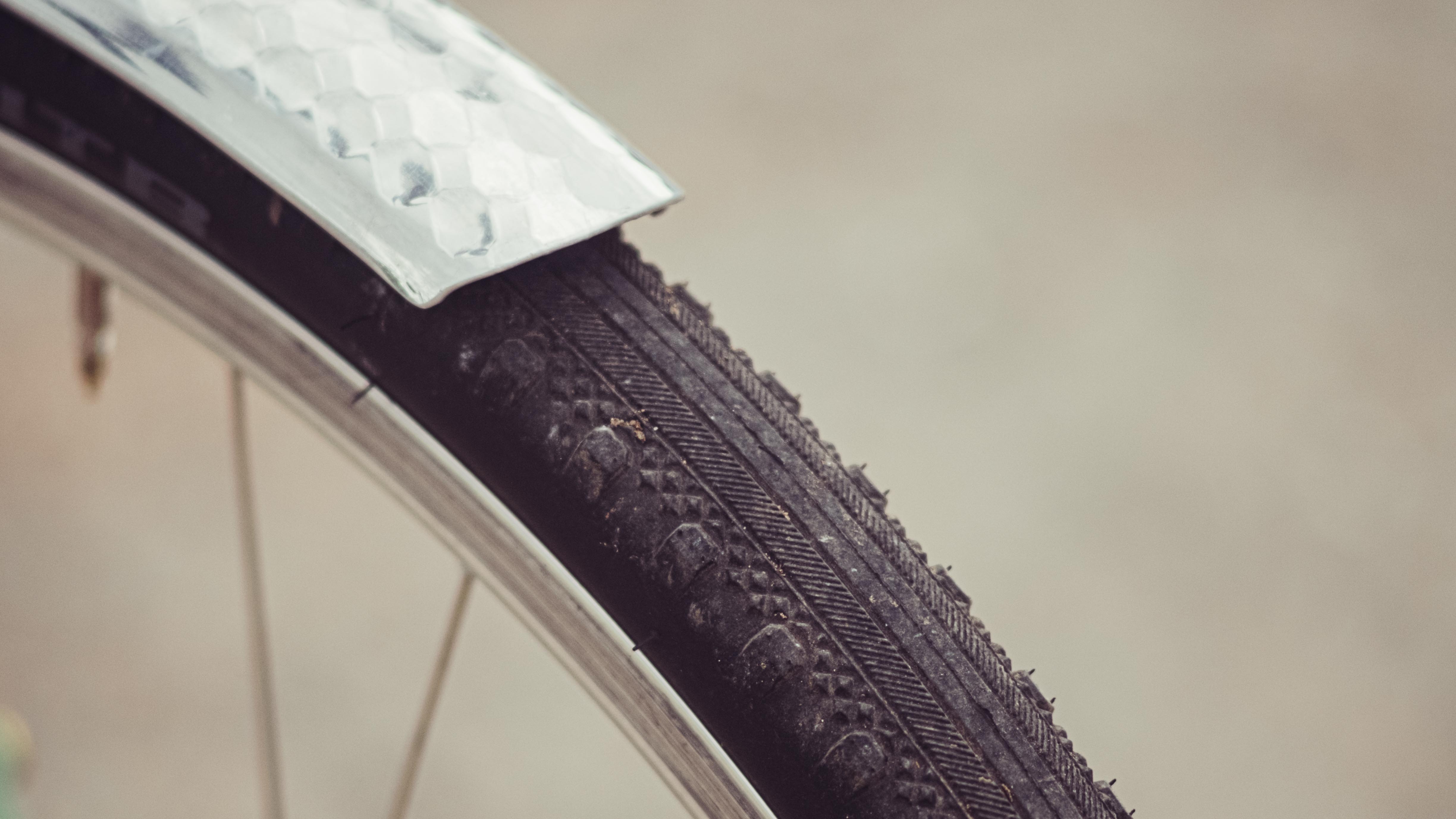Cyclingnews Verdict
A good tread pattern but let down by a profile that is too flat and created a sluggish feel on road.
Pros
- +
Decent puncture protection
- +
Better grip than expected on dry gravel
Cons
- -
Draggy and unresponsive on tarmac
- -
At pressures required to be fast on the road, they are jarring off road
You can trust Cyclingnews
We’re absolutely spoiled for choice nowadays when it comes to tyre choices. Back in the day for gravel riding, you were effectively consigned to using either touring tyres with a weight penalty and ludicrously stiff carcasses, or cyclocross race tyres which were grippy but often fragile. Fast forward to the present and we have tyres for all types of gravel, in casings for both touring and racing, along with slick tyres in widths that would have seemed ridiculous only a few years ago.
Somewhere in the middle exists the ‘all-road’ category of tyres. Not quite a gravel tyre, but also not what you’d think of as a road tyre either. As many of the best gravel bikes have secondary use ambitions as all-road or endurance bikes, it's certainly a tyre segment worth paying attention to.
They usually feature a slick centre and some level of additional shoulder grip, be that actual lugs or just added tread textures. It’s fair to say that WTB was pretty instrumental in pioneering this kind of rubber with its Horizon tyre, as seen on bikes like the Cannondale Slate. The WTB Byway exists at the lumpier end of the all-road segment, with a slick centreline, transitioning into two file treads of increasing bite, before some D-shaped lugs appear on the shoulders to provide some cornering traction in looser terrain.
I’ve been running these on my classic do-it-all bike for a while now, taking in tarmac, badly maintained country roads, some sandy gravel and some more muddy terrain too, so read on to see how these match up against the best gravel tyres.
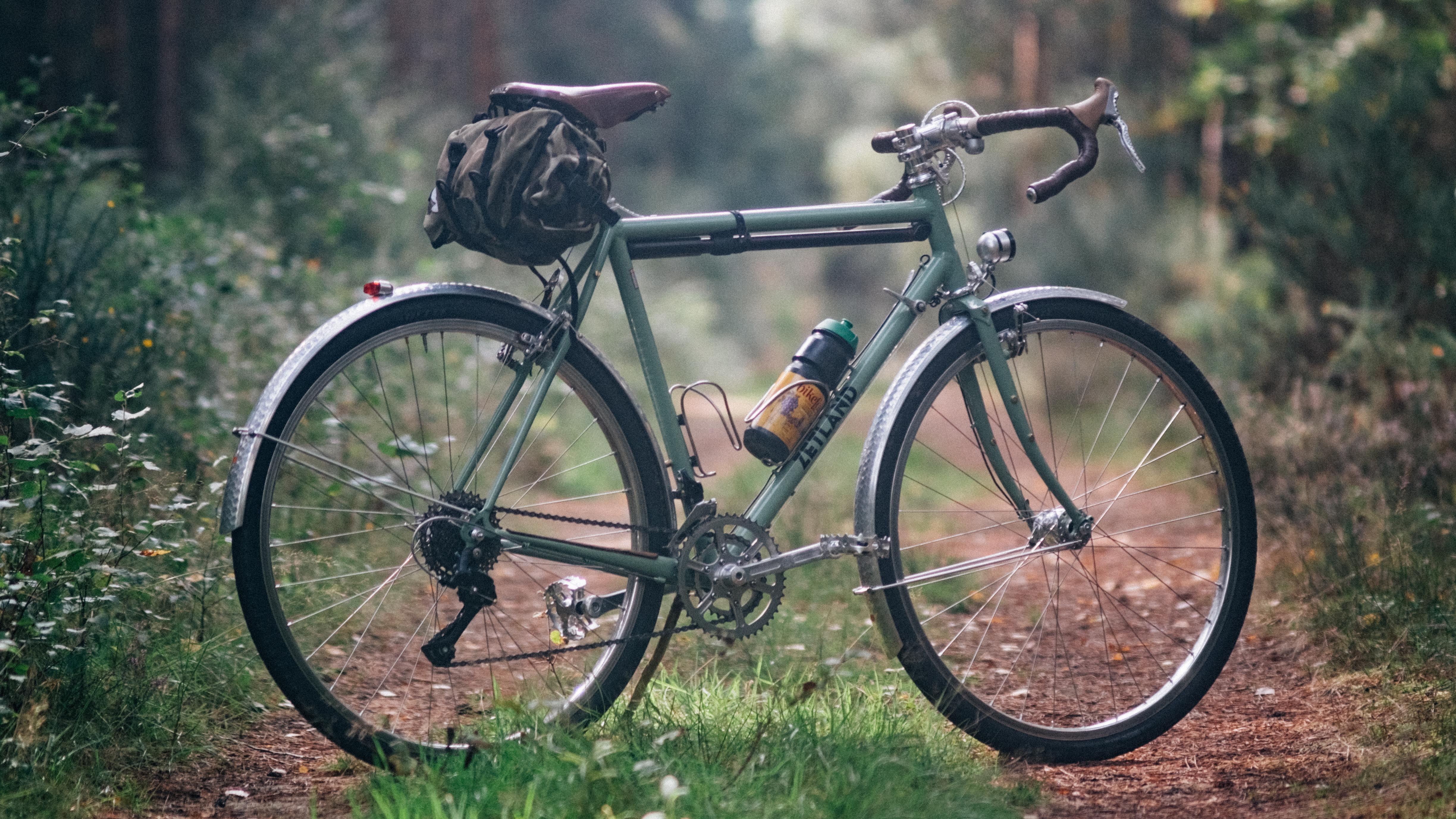
Design and aesthetics
The tread pattern on the WTB Byway is similar in many ways to that of the Teravail Washburn but with a little less bite, and also that of the American Classic Kimberlite. The slick centreline transitioning to a file tread a little further out is about as standard a baseline for an all-road tyre as you’re going to find; it’s a pretty tried and tested formula, aiming to provide fast, low rolling resistance riding on smoother surfaces. Between similar versions, there is usually little to tell them apart in terms of straight-line speed on decent roads; it’s the shoulders that tend to make a difference.
In this case, beyond the file treads bordering the slick centre, we have a narrow band of diamond files that should offer a little more bite on actual gravel, although the equivalent section of the American Classic Kimberlite is wider. The more prominent edge lugs, more or less D-shaped here, aren’t surrounded by tread, instead standing alone. This may have been done to allow better mud shedding, or to increase the relative height of the lugs to add more bite, but I’d have preferred to see them flanked by more diamond files.
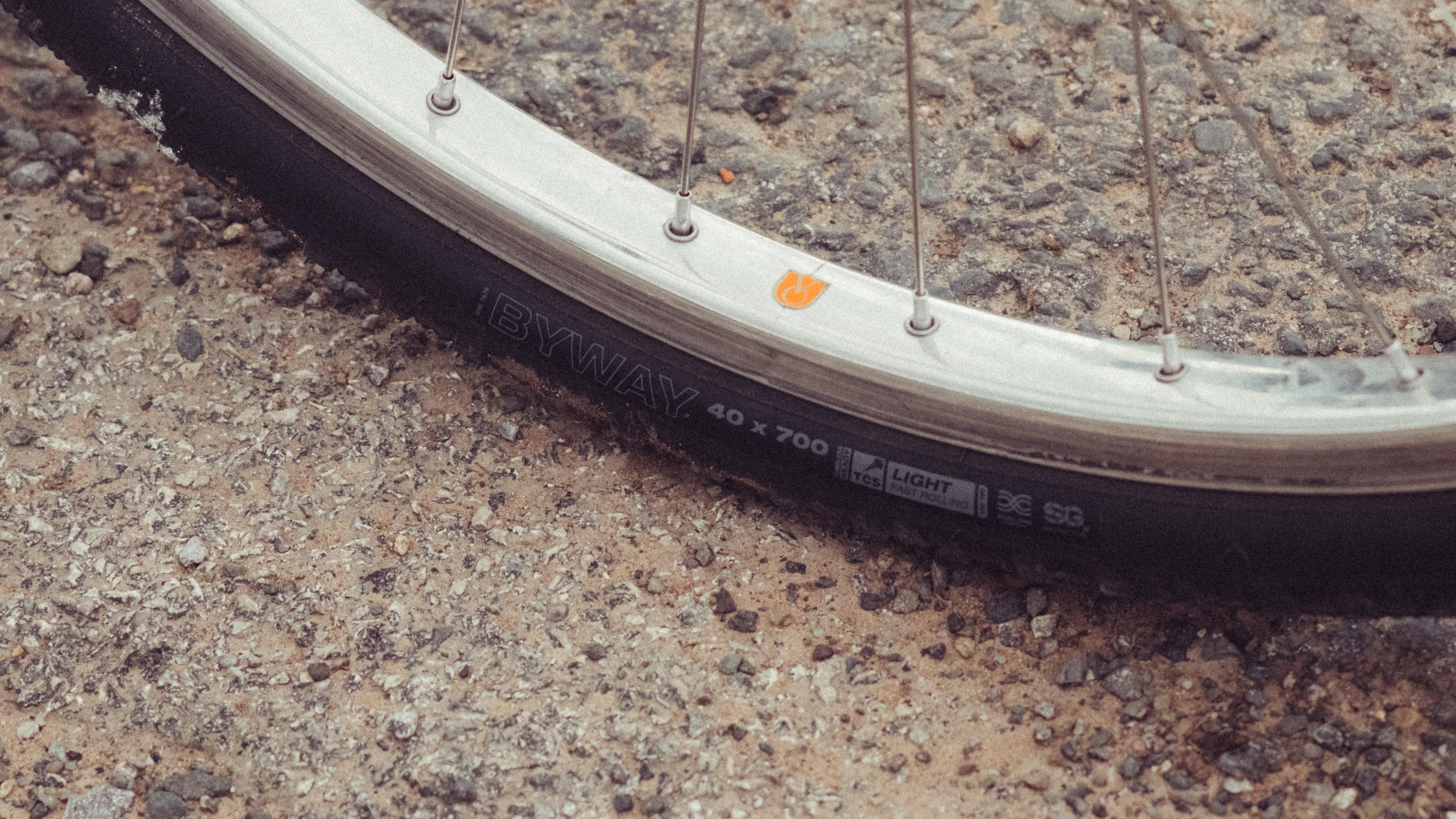
The casing, at 120 threads per inch (TPI) is relatively supple. These aren’t a pair of cotton-cased cyclocross tyres, and if you’re more of a touring mindset, or just want a bit more protection, WTB offers a 60TPI option. If you’re wondering what I'm talking about and why it matters, we have a separate guide, simply called what is TPI, to keep you informed.
Tyre branding matters not in terms of performance, but from a purely aesthetic standpoint, I’d rather the logos were the right way up when at the top of the wheel rather than at the bottom. It’s a personal preference, but when taking photos of my bike I keep the valves uppermost, and if I’m in deep mud or long grass it obscures the branding.
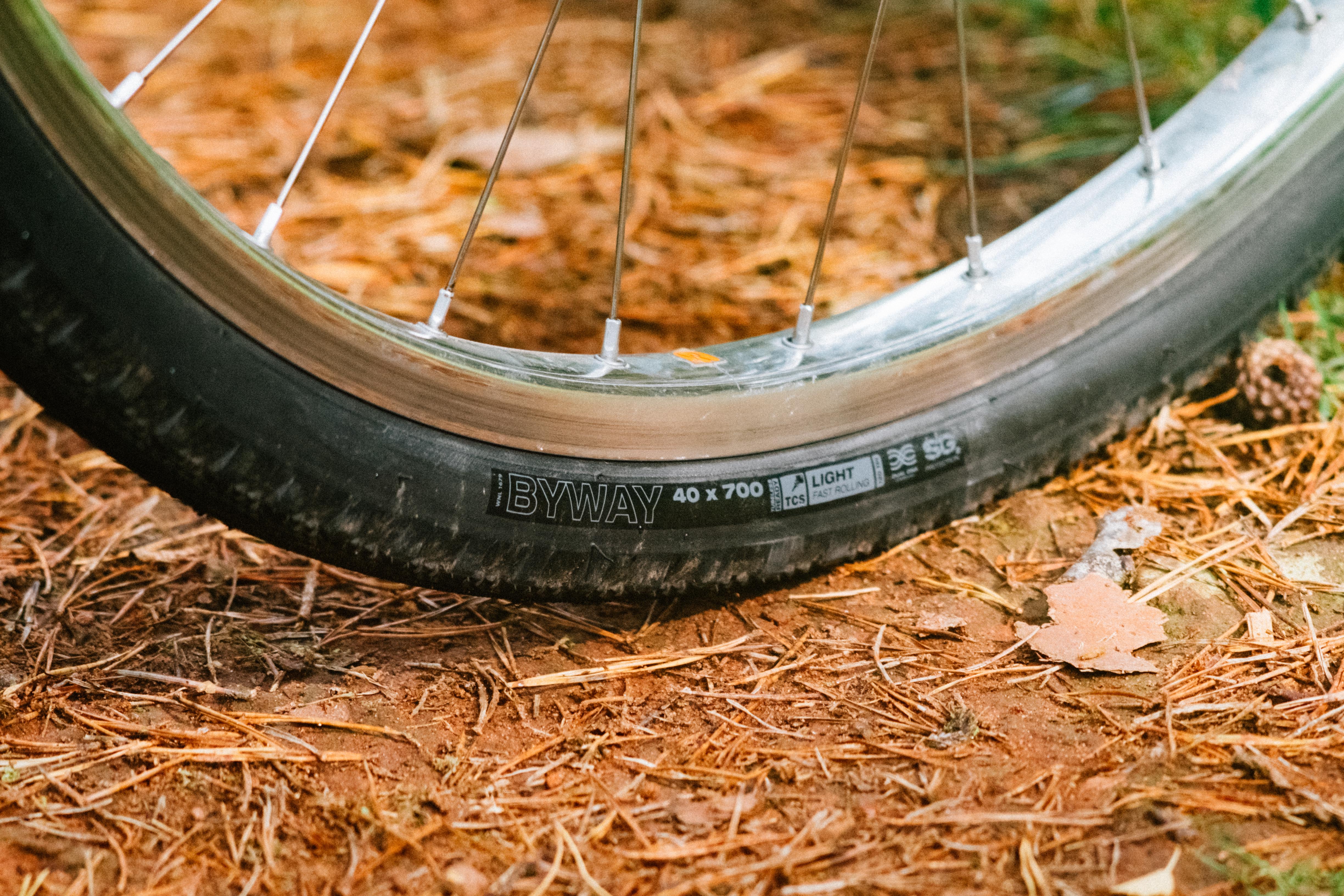
Performance
To kick off any tyre review means mounting the things first, and realistically nowadays it also means setting them up tubeless. I’m happy to report that compared to almost any other tyre these were an absolute delight to get onto the rims, barely even needing a set of the best tyre levers to get the bead over the lip. With a good glug of Squirt sealant, along with a capful of its accompanying beads, the Byways seated straight away with just a track pump and no need for the old soapy water trick.
Before I describe to you the feel of these tyres, it’s important to take a moment to discuss the tyre's shape. The tread is important, as are things like the casing and the rubber compound. What is rarely discussed is the shape the tyres take when inflated. This is influenced somewhat by the internal width of the rim (in this case 22mm internal Velo Orange Voyager rims), but is also baked in by the mould at the factory.
The profile of the WTB Byway is a little flatter in the centre than other tyres I’ve used, which has some benefits and some drawbacks. The flatter profile means that, especially at pressures more suited to gravel riding, the contact patch is larger which results in quite a draggy feeling on the tarmac. At my usual all-road pressures for mixed-terrain riding, they ended up feeling rather wooden and unresponsive on the road; not quite sloppy, but lacking an element of precision.
On the flip side, it does mean that when venturing off-road the tyres grip better than you’d expect if you run them at higher pressures. This does fall apart slightly in actual mud, where no slick-centred tyre will ever excel, but in the dry, and especially on more loamy trails where the lugs can bite in a little more, they handle steep inclines at relatively high pressures with ease. They’re not going to compete with a pure gravel tyre for grip, mind.
I like to run my tyres pretty soft if I’m heading onto gravel though, and the sluggish feel on the road was genuinely a little frustrating. In order to alleviate this, I took to running them at over 50psi for a few rides, and at this point, they were enjoyable enough on the road, but uncomfortable when not on tarmac. Given they were under an all steel, very comfy bike this was noteworthy. It left me thinking if I wanted a gravel tyre I may as well fit a pure gravel tyre and accept the speed penalty associated with a knobbly centre or, if riding on the road, just fit a big set of slicks.
Given the enlarged contact patch, they were plenty grippy on gravel, and at gravel pressures, they were relatively fast thanks to the slicker centre. On looser surfaces, they did skit about, and in deeper sections of sand they washed about more than tyres with actual knobs, but that’s to be expected. Where they did excel was on broken, beaten-up tarmac. The classic grass-up-the-middle back lanes with surprise patches of gravel, mud, or an off-camber bank that needs diving into to avoid an oncoming tractor: A countryside tyre. The puncture resistance was good too. A large pin did penetrate the carcass at one point but the Squirt sealant sealed it immediately with no discernible loss in pressure.
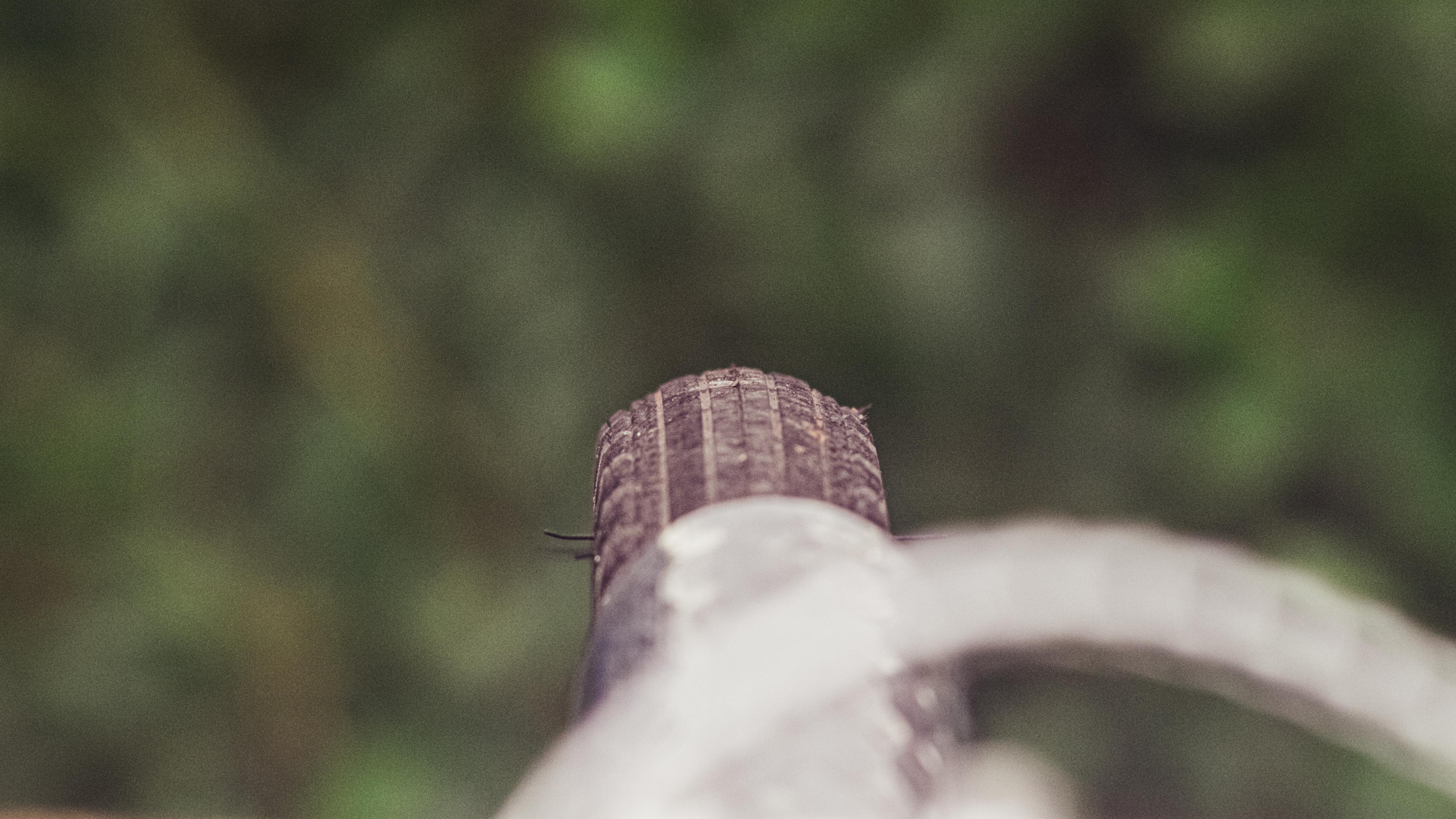
Value
Tyres, like everything else in the cycling world, have been getting steadily more expensive. WTB has usually been at the less premium end of the tyre spectrum, especially in the lower TPI casing options. At £55 for the light and fast option, these aren’t appreciably cheaper than the Teravail Washburns, a tyre I ran before these in a wider size and enjoyed far more.
Given you can get the similarly treaded and cased American Classic Kimberlite for a noticeably lower price (though there is a 100g weight penalty, these being 463g per tyre) I’d be inclined to suggest the 120TPI version of the WTB Byway isn’t a fantastically good value tyre.
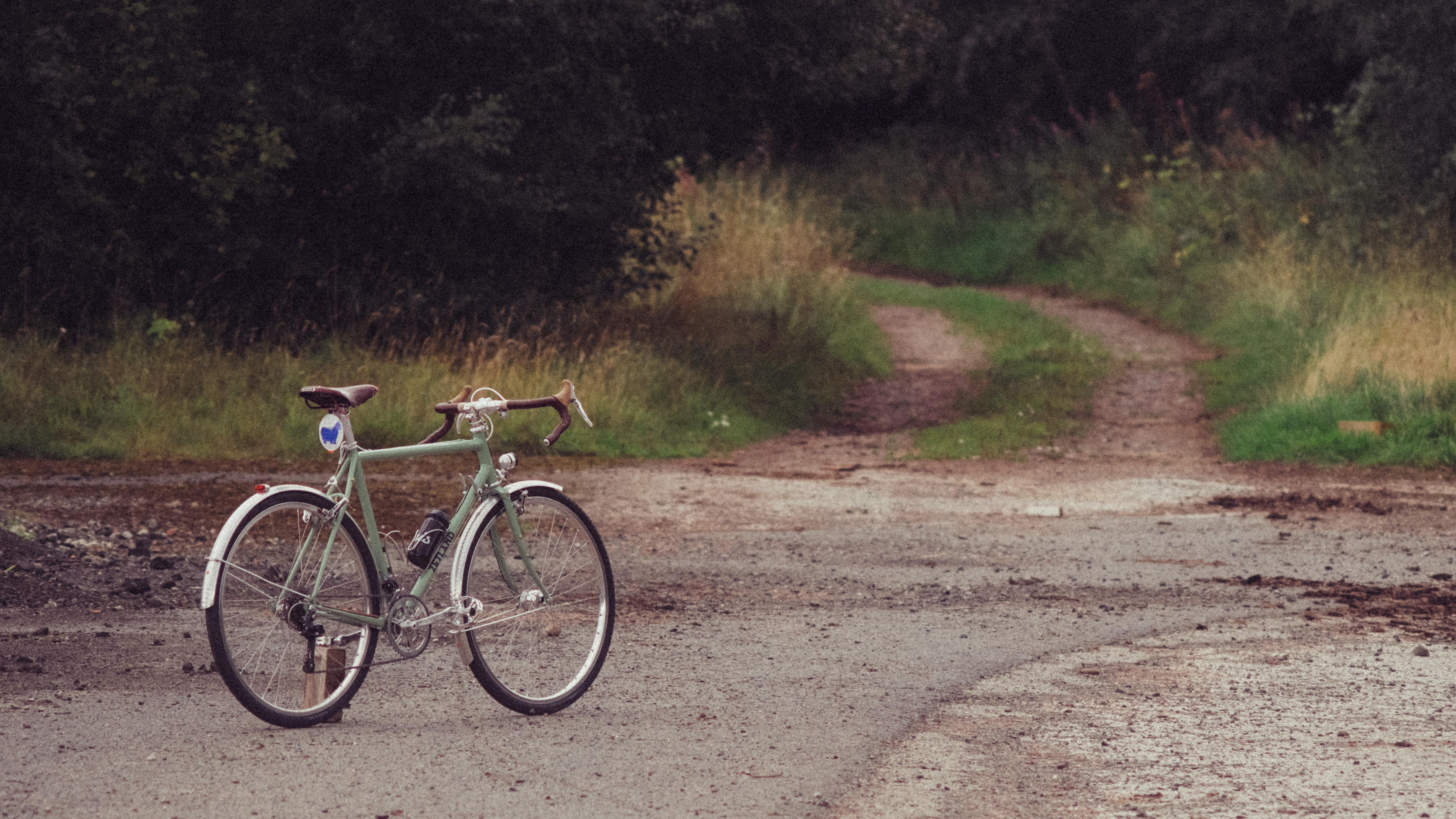
Verdict
The problem with trying to create a jack-of-all-trades product is that you sometimes create a master of none. Yes, these tyres are decent enough on the tarmac when at high enough pressures, but not as good as a dedicated slick would be. Yes, they’re decent off-road, but not as good as a dedicated gravel tyre, and uncomfy to boot if you’re riding at pressures enjoyable on the road.
My advice would be that if you are primarily riding country back lanes with occasional forays into the woods then these are a safe, but not hugely inspiring bet. If this is the case you’ll probably want to run them at higher pressures, at which point you may as well opt for the cheaper but less supple 60TPI option anyway and save yourself a wedge of cash. If you want a more gravelly option on the cheap then look to the Kimberlite, or for a pretty similar price I’d go for the Teravail Washburns: You’ll have a better time.
| Attributes | Notes | Rating |
|---|---|---|
| Design and aesthetics | As a tyre treat it's a relatively safe recipe, though the logos are upside down | 8/10 |
| Performance - Tarmac | At mixed terrain pressures these were quite a sluggish ride | 4/10 |
| Performance - Gravel | At gravel pressures they were fast, and grippier than you'd expect given the slick middle sections | 7/10 |
| Puncture resistance | With the right sealant they do very well for a more supple offering | 8/10 |
| Value | Considering they're a similar price to the Washburns and a lot more than the Kimberlites they aren't a savvy investment | 4/10 |
| Overall rating | Row 5 - Cell 1 | 62% |

Will joined the Cyclingnews team as a reviews writer in 2022, having previously written for Cyclist, BikeRadar and Advntr. He’s tried his hand at most cycling disciplines, from the standard mix of road, gravel, and mountain bike, to the more unusual like bike polo and tracklocross. He’s made his own bike frames, covered tech news from the biggest races on the planet, and published countless premium galleries thanks to his excellent photographic eye. Also, given he doesn’t ever ride indoors he’s become a real expert on foul-weather riding gear. His collection of bikes is a real smorgasbord, with everything from vintage-style steel tourers through to superlight flat bar hill climb machines.
